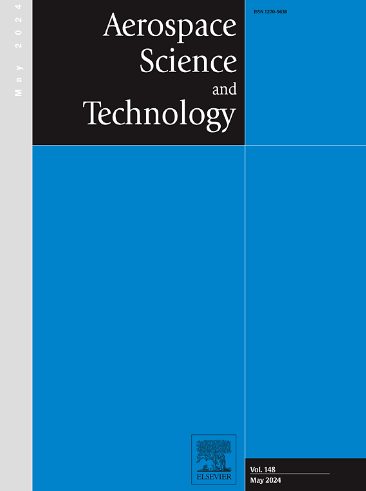使用基于径向基函数人工神经网络的快速终端滑动模式对变形无人机进行轨迹跟踪控制:理论与实验
IF 5
1区 工程技术
Q1 ENGINEERING, AEROSPACE
引用次数: 0
摘要
近来,变形航空系统(MAS)因其卓越的机动性、灵活性和在复杂环境中的敏捷性而需求激增。与传统的无人机不同,MAS 能够在飞行过程中适应和改变其形态。然而,如何管理这些创新的非传统飞行器的控制和稳定性是一项重大挑战,尤其是在空中变换阶段。为解决这一问题,本手稿提出了一种基于径向基函数人工神经网络的快速终端滑模控制(RBFANN-FTSMC)方法。该方法旨在有效管理形态变化,确保精确的轨迹跟踪,并减轻外部干扰和参数不确定性的影响。因此,RBFANN-FTSMC 将通过两个飞行模拟场景,与比例积分微分(PID)、滑动模式(SM)和快速终端滑动模式(FTSM)控制器进行对比评估,以验证其有效性。此外,还将使用一种名为 "鲸鱼优化算法"(WOA)的最新元启发式算法对控制参数进行优化。此外,还解释了一种新颖的硬件控制图。最后,讨论了改变形态的能力和实验测试结果,以突出机械结构和实施的 RBFANN-FTSMC 的性能和局限性。本文章由计算机程序翻译,如有差异,请以英文原文为准。
Trajectory tracking control of a morphing UAV using radial basis function artificial neural network based fast terminal sliding mode: Theory and experimental
Lately, Morphing Aerial Systems (MASs) have seen a surge in demand due to their exceptional maneuverability, flexibility, and agility in navigating complex environments. Unlike conventional drones, MASs boast the ability to adapt and alter their morphology during flight. However, managing the control and stability of these innovative and unconventional vehicles poses a significant challenge, particularly during the aerial transformation phases. To solve this problem, this manuscript proposes a Radial Basis Function Artificial Neural Network-Based Fast Terminal Sliding Mode Control (RBFANN-FTSMC) method. This approach is designed to effectively manage morphology changes, ensure precise trajectory tracking, and mitigate the impact of external disturbances and parameter uncertainties. Accordingly, the RBFANN-FTSMC will be evaluated against Proportional Integral Derivative (PID), Sliding Mode (SM), and Fast Terminal Sliding Mode (FTSM) controllers through two flight simulation scenarios to validate its effectiveness. Additionally, the control parameters will be optimized using a recent metaheuristic algorithm known as the Whale Optimization Algorithm (WOA). A novel hardware control diagram is explained. Finally, the ability to alter morphologies and the results of experimental tests are discussed to highlight the performance and limitations of the mechanical structure and the implemented RBFANN-FTSMC.
求助全文
通过发布文献求助,成功后即可免费获取论文全文。
去求助
来源期刊

Aerospace Science and Technology
工程技术-工程:宇航
CiteScore
10.30
自引率
28.60%
发文量
654
审稿时长
54 days
期刊介绍:
Aerospace Science and Technology publishes articles of outstanding scientific quality. Each article is reviewed by two referees. The journal welcomes papers from a wide range of countries. This journal publishes original papers, review articles and short communications related to all fields of aerospace research, fundamental and applied, potential applications of which are clearly related to:
• The design and the manufacture of aircraft, helicopters, missiles, launchers and satellites
• The control of their environment
• The study of various systems they are involved in, as supports or as targets.
Authors are invited to submit papers on new advances in the following topics to aerospace applications:
• Fluid dynamics
• Energetics and propulsion
• Materials and structures
• Flight mechanics
• Navigation, guidance and control
• Acoustics
• Optics
• Electromagnetism and radar
• Signal and image processing
• Information processing
• Data fusion
• Decision aid
• Human behaviour
• Robotics and intelligent systems
• Complex system engineering.
Etc.
 求助内容:
求助内容: 应助结果提醒方式:
应助结果提醒方式:


